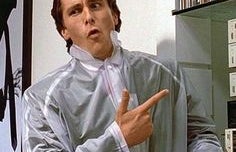Halloween is less than a week away, so my roommates and I are watching horror movies. As I reach for another pumpkin-flavored chip, Patrick Bateman drops a chainsaw on a prostitute.
By now, we’ve all heard the argument that horror movies are sexist. Film majors have finished their essays on one-dimensional female character tropes, submitted them an hour late with an email asking for an extension and gone on with their lives. Slasher films are still a staple of the genre, often featuring what some call the final girl: a youthful (often virginal) girl, attractive to the male gaze and meek prey for the serial killers that chase them. I mean, I read an article called “32 Horror Movies That Feature Slight To Severe Misogyny And/Or Sex Murder But Are Worth Watching,” and if that doesn’t tell you enough…then I’m not sure what else to say. But horror isn’t the only problematic genre: misogyny is inherent to the film industry itself and its long history of excluding women from positions of power. As long as women continue to engage with film as an art form, we will also continue to fall in love with horror films that may or may not love us back.
“[Jennifer’s body is] Twilight for boys, with Megan Fox in the Robert Pattinson role.”
– Roger Ebert for RogerEbert.com in 2009
Despite the tendency for female characters in horror films to be over-sexualized and under-developed, some argue that horror surpasses other genres in its number of complex leading women. Women make up 26% of protagonists in horror films, but less than 21% in comedies, actions, and science-fiction. In an article for No Film School, Alyssa Miller argues that the genre has always been ahead of the game in its representation of complex women as both victims and villains, and its critical analysis of sexuality, the body and gender. For example, Carrie’s internal conflict during puberty is displayed alongside her emerging bloodlust as a warning of the violent consequences of repressing things feminity. More recently, we’ve seen Lupita Nyong’o in Us and Florence Pugh in Midsommar and Don’t Worry Darling (which gave me nightmares about greasy-haired Harry Styles scrolling incel forums).
But it has taken years of critical reevaluation for these complex horror movies to reach their modern status. In its debut, Jennifer’s Body was dismissed as a raunchy teen horror directed for straight boys. A 2009 review even called it “Twilight for boys, with Megan Fox in the Robert Pattinson role.” Since then, it has reemerged as a cult classic and aesthetic trend (“‘You’re killing people’ — ‘No, I’m killing boys‘”). Audiences have finally recognized what makes Jennifer’s Body a fundamentally feminist film: Jennifer is possessed by a demon, but her bloodlust is a consequence of the men who tied her up and sacrificed her to Satan in a bid for fame. Jennifer, like Carrie, is a warning to those who torment women.
If not for the female gaze, Jennifer’s Body would still be an outcast of the film world. But it’s hard to find our perspective in the film industry. Women represented only 13.7% of the 913 directors behind 837 films released between 2015-2021. Only 3.1% of these directors were women of color, representing another important layer to the lack of perspective and representation in film.
“Through a woman’s eyes…we see how fragile masculinity breeds hatred and violence.”
As my friends and I watch American Psycho, we sense the female gaze of screenplay writers Mary Harron and Guinevere Turner. They are who transformed the source material by Bret Easton Ellis from a book boycotted by feminists in the 1990s, into a (sort of) feminist masterpiece. American Psycho follows Christian Bale as Patrick Bateman, a 1980s Wall Street yuppie who goes on a killing spree. Bale’s own stepmother, notorious feminist Gloria Steinem, was a prominent critic of Ellis’s American Psycho for its brutal depictions of the rape and mutilation of women. But the movie doesn’t reflect this — except for some iconic blood splatters and a fatal chainsaw drop, there is little violence actually seen on screen. My roommates took turns filling in the blanks: he must’ve killed her if he had a lock of her hair in his pocket, etc. The implied violence leaves more time for scenes of investment bankers mocking women, throwing around homophobic and antisemitic slurs and snorting drugs in a bathroom stall. Instead of subjecting us to the torment of women, director Mary Harron shows us the hypocrisy and insecurities of powerful men. Through Harron’s eyes (and the rolling eyes of the women forced to listen to Bateman’s lengthy tangents about music), we see how fragile masculinity breeds hatred and violence.
Nevertheless, men continue to dominate the discourse around American Psycho. Ellis maintains American Psycho was never a feminist book, though it was a satire of 1980s Wall Street greed and superficial consumer culture from Ellis’s outside perspective as a gay man. Even these themes have been trampled online by “sigma males” who lip sync along to Bateman’s voice (“you can always be thinner, look better”) as they showcase their rise-and-grind morning routines on TikTok. This is a recent spinoff of early 2000s internet forums that idolized Bateman’s body and reenacted his misogyny.
Now that I’m picturing Harry Styles with his Don’t Worry Darling incel haircut again, I’m reminded that men can always be disappointing. But I can also envision a future in which we continue to innovate and reimagine art through a female perspective, and it’s only as scary as its best horror movies.






